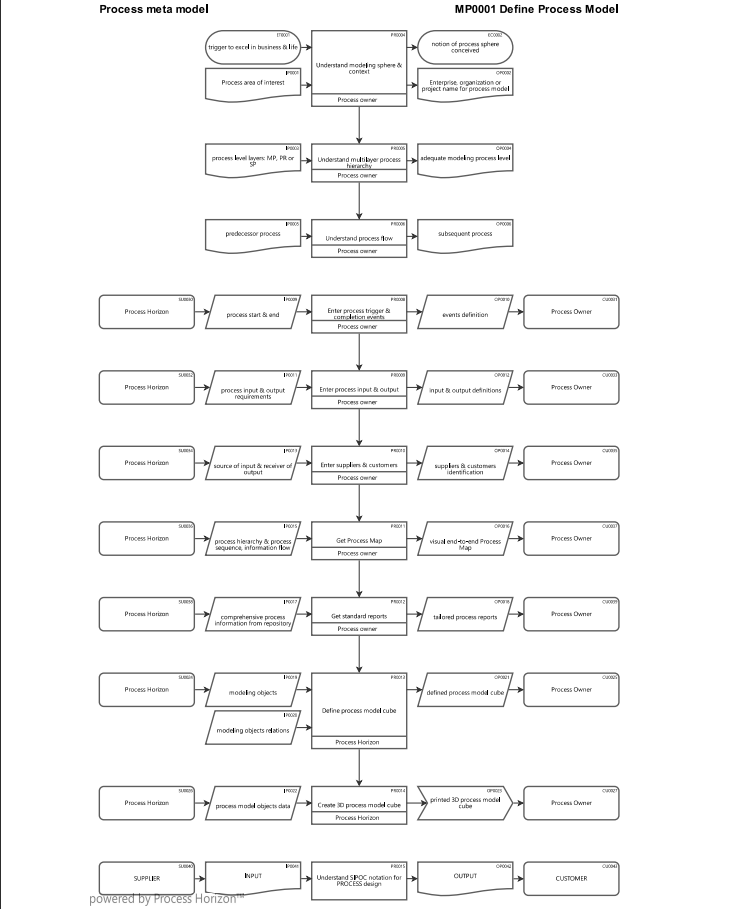Object-oriented process modeling via SIPOC

The ProcessHorizon app supports an object-oriented process modeling methodology using the SIPOC class for model building.
SIPOC+ class definition: TriggerEvent > CompletionEvent (process scope) Supplier (source) > Input > PROCESS > Output > Customer (destination)
For each process to be modeled its name must be defined first consisting of a verb & noun (activity analogy) and subsequently all relevent objects like Input & Input Provider (Supplier) as well as Output & Output destination (Customer) should be defined. Optionally the Process Trigger Event & Completion Event can be defined as process scope and eventually to model an events-driven process chain for a suite of processes. The naming of the SIPOC object instances should be concise and compact, i.e. business keyword like. Each object instance is uniquely stored in a process repository. A process is explicitly defined by these SIPOC+ object instances as reflected in the auto generated visual process diagrams and process maps. The objective & purpose of a process (value-add) can be provided in the process description and the process owner as well as other process attribute information can be specified in the respective fields.
The process model can be created iteratively over three process hierarchy layers which are main process strategic level (MP), process management level (PR) and subprocess working level (SP). A company business process model should start at the strategic top level but organization unit related process models can be defined on the process management level and subsequently be decompositioned or refined to the subprocess working level as required.
The process flow and interaction of processes in a process suite can be established by selecting the respective predecessor process as present in the process navigation dashboard. The process map for a process suite will always show the latest relationships (on the hierarchy & flow dimensions) as per real time repository and navigation dashboard. Any changes to the process model will thus be instantly reflected in the auto re-generated process diagram or process map.
The beauty of the OO process modeling architecture is that e.g. a company-wide process model can be built iteratively and be expanded seamlessly to any number of processes and be visualized in customized process maps as selected from the navigation dashboard.
Free trial of the smart ProcessHorizon web app: https://processhorizon.com
P.S.: most if not all other process modeling apps are basically drawing or layout tools with constraints on process complexity and cumbersome handling of modifications.

